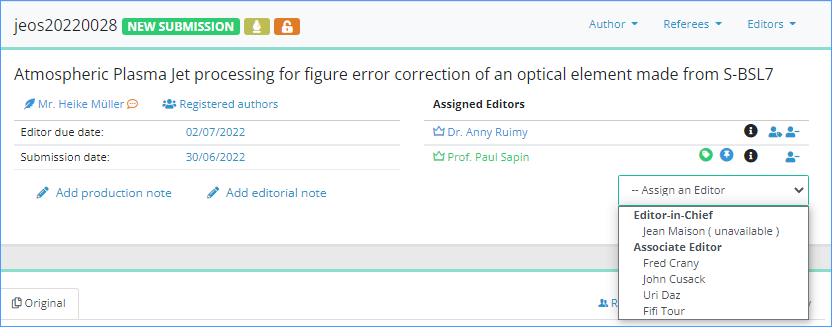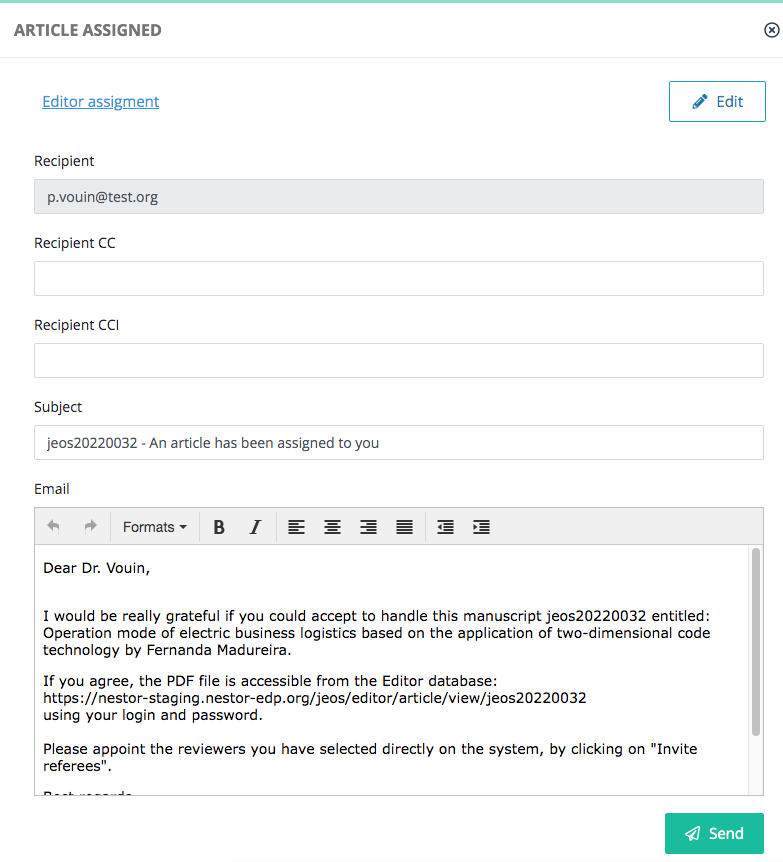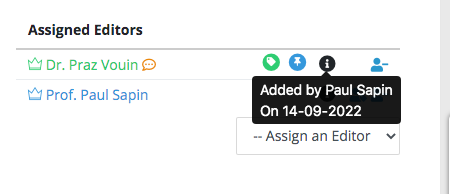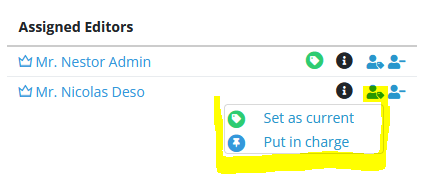Assigning editors
If you are an Editor-in-Chief, you will likely assign articles to other editors (e.g. Associate Editors, Co-Editors, Area Editors, Guest Editors, etc.).
Click on the ‘Assign an Editor’ menu and select the editor you want.want to assign. This opens the e-mailconfirmation pop-upwindow, window (you will often see this kind of pop-up in NESTOR). >> Pay attention, ifproposing you clickassignment on the Send button, the letter is sent directly without any editing.e-mails:
Once your confirm the assignment, several things happen:
- the article status will change
- the editor will be assigned to the article as "current editor"
- you will be assigned as the parent editor, which means any decision proposals will come back to you
clickforonvalidation - finally, the
letterassignednameeditorormayonget theEdit"editorbutton,inthischarge"unfoldstag
Ifthe letter and you can edit it before sending.
Current editor & editor in charge
When an editor is assigned to an article:
- Nestor automatically assumes this editor is responsible to move the editorial process forward: the editor is now considered "current editor", and is highlighted with a green badge
- Additionally, if this editor has a scientific profile: Nestor will consider him as "editor in charge", and is highlighted with a blue badge
Most of the time, an editor is both "current" and "in charge". Depending on your workflow, this can change later on in the process. Typically, at the acceptance stage:
- the scientific editor will remain in charge
- and a copy editor gets assigned, and is now "current"
After assignment, editor's responsibility may be easily corrected with these tools:





